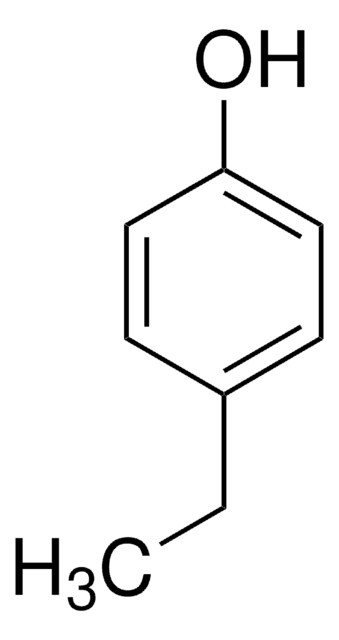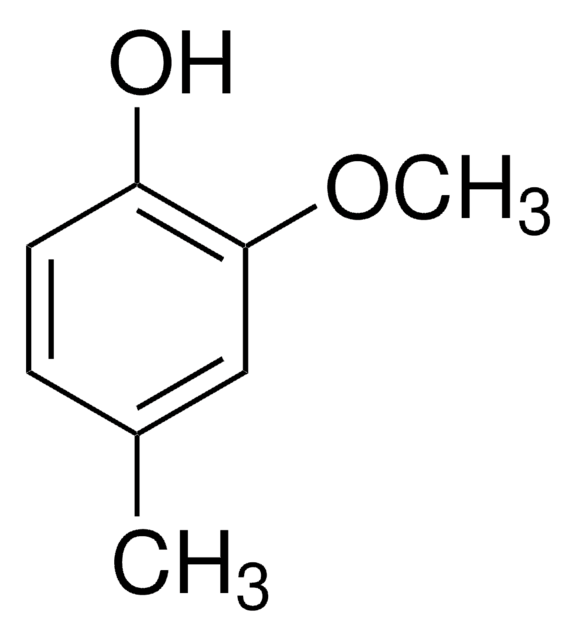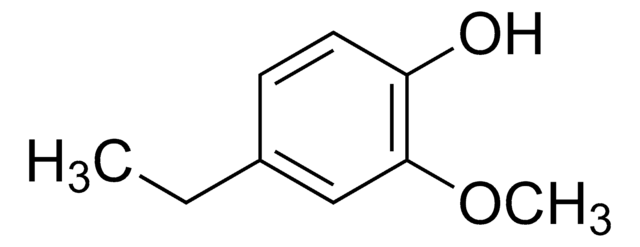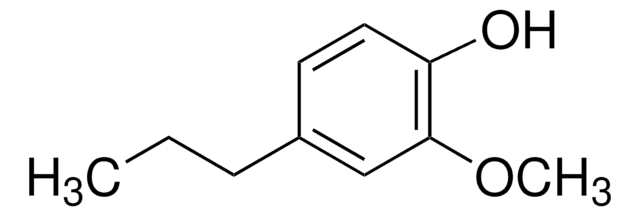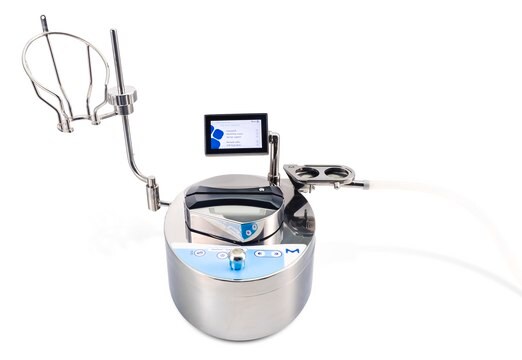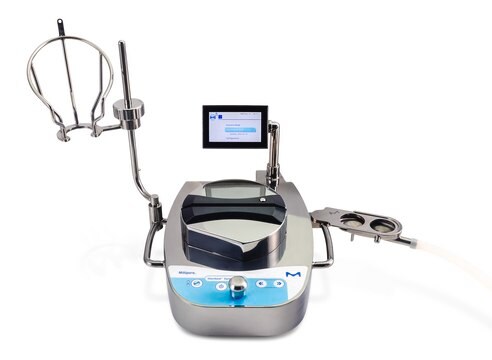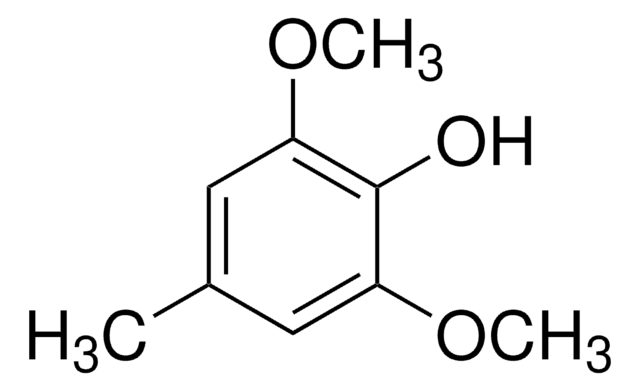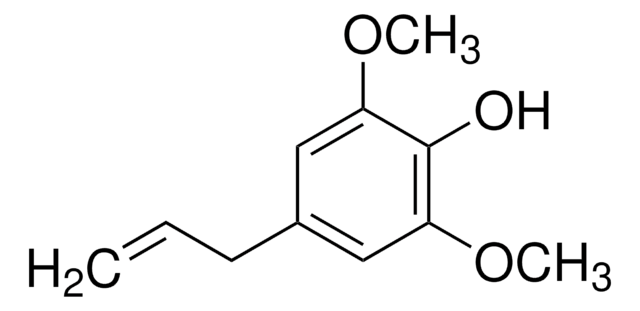W243604
4-Ethylguaiacol
≥98%, FCC, FG
Sinônimo(s):
4-Ethyl-2-methoxyphenol, NSC 82313
About This Item
Produtos recomendados
fonte biológica
synthetic
grau
FG
Fragrance grade
Halal
Kosher
Agency
follows IFRA guidelines
meets purity specifications of JECFA
conformidade reg.
EU Regulation 1223/2009
EU Regulation 1334/2008 & 178/2002
FCC
FDA 21 CFR 117
FDA 21 CFR 172.515
Ensaio
≥98%
índice de refração
n20/D 1.528 (lit.)
p.e.
234-236 °C (lit.)
pf
15 °C (lit.)
densidade
1.063 g/mL at 25 °C (lit.)
aplicação(ões)
flavors and fragrances
Documentação
see Safety & Documentation for available documents
alérgeno alimentar
no known allergens
alérgeno de fragrância
no known allergens
Organoléptico
bacon; clove; leather; smoky; spicy
cadeia de caracteres SMILES
CCc1ccc(O)c(OC)c1
InChI
1S/C9H12O2/c1-3-7-4-5-8(10)9(6-7)11-2/h4-6,10H,3H2,1-2H3
chave InChI
CHWNEIVBYREQRF-UHFFFAOYSA-N
Procurando produtos similares? Visita Guia de comparação de produtos
Categorias relacionadas
Descrição geral
Aplicação
- Co-culture fermentation by Saccharomycopsis fibuligera and lactic acid bacteria improves bioactivity and aroma profile of wheat bran and the bran-containing Chinese steamed bread.: This study examines the impact of co-culture fermentation on the bioactivity and aroma of wheat bran, with a focus on the contribution of 4-Ethylguaiacol to flavor enhancement in food processing, emphasizing its potential for improving the nutritional and sensory quality of baked goods (Tang et al., 2024).
Embalagem
Palavra indicadora
Warning
Frases de perigo
Declarações de precaução
Classificações de perigo
Eye Irrit. 2 - Skin Irrit. 2 - STOT SE 3
Órgãos-alvo
Respiratory system
Código de classe de armazenamento
10 - Combustible liquids
Classe de risco de água (WGK)
WGK 2
Ponto de fulgor (°F)
226.4 °F - closed cup
Ponto de fulgor (°C)
108 °C - closed cup
Equipamento de proteção individual
Eyeshields, Gloves, type ABEK (EN14387) respirator filter
Escolha uma das versões mais recentes:
Já possui este produto?
Encontre a documentação dos produtos que você adquiriu recentemente na biblioteca de documentos.
Os clientes também visualizaram
Global Trade Item Number
| SKU | GTIN |
|---|---|
| W243604-1KG | |
| W243604-5KG | |
| W243604-100G | |
| W243604-100G-K | 4061837800115 |
| W243604-1KG-K | 4061837512544 |
| W243604-5KG-K | 4061837800122 |
| W243604-SAMPLE | |
| W243604-SAMPLE-K | 4061837512551 |
Nossa equipe de cientistas tem experiência em todas as áreas de pesquisa, incluindo Life Sciences, ciência de materiais, síntese química, cromatografia, química analítica e muitas outras.
Entre em contato com a assistência técnica